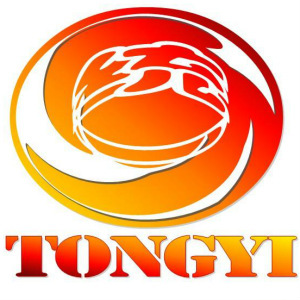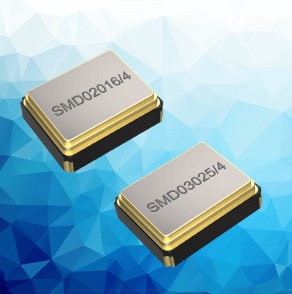时钟元件的趋势M1610-32.768kHz-±20ppm-12.5pF具有更小更高的频率稳定性6G晶振
时钟元件的趋势M1610-32.768kHz-±20ppm-12.5pF具有更小更高的频率稳定性6G晶振
The size and frequency stability of clocking pruducts influence the dimensions and power consumption of an end device. The developers of battery-operated products in particular require precise and compact frequency generators – an overview of the current state of technology in the oscillating quartz market.
Quartz crystals (or just quartz) was developed into practicable quartz for use in radio engineering at the start of the 1920s. Today, we simply can’t do without quartz in our modern, technological lives. Over recent years, there has been a significant transition from large THT (Through-Hole-Technology) and SMD quartz (Surface Mounted Device) in metal housings for miniaturised SMD quartz in ceramic housings. The need for higher-frequency oscillating quartz in smaller housings has been a big driver for this trend. Thanks to technological advances and several innovations in production, it became possible to significantly reduce the structural size of the oscillating quartz without cutbacks on performance or increased costs.
At the moment, the form factor 3.2 x 2.5 mm is used a lot in all kinds of applications, mainly in connection with resistance optimisation of the quartz for the optimal oscillation behaviour in the defined working temperature ranges and in the frequency range of 8.0 to 64.0 MHz (AT base tone). They can be operated with a drive level of up to 500 µW (in the frequency range from 12.0 to 64.0 MHz). For particularly demanding applications, components with frequency tolerances of up to ±10 ppm and a temperature range of -55 to 125 °C are available.
时钟元件的趋势M1610-32.768kHz-±20ppm-12.5pF具有更小更高的频率稳定性6G晶振
In past years, the SMD quartz in ceramic housing with the dimensions from 2.5 x 2.0 mm housing (4 pad) to 3.2 x 2.5 mm housing (4 pad) developed in parallel, but never really caught on. If a 3.2 x 2.5 mm housing is too large, you can rely on the high-volume product in 2.0 x 1.6 mm housing (4-pad). This housing type is on trend for very small applications. The quartz design in this form factor is also resistance-optimised and designed for the optimal oscillation behaviour. The developer can use versions with a drive level of up to 400 µW.
The trend towards smaller housings and a greater frequency stability is also evident in the as well. The smallest version with the dimensions 1.2 x 1.0 mm is just about to be released. 32.768 KHz quartz in 3.2 x 1.5 mm housing and 2.0 x 1.2 mm with reduced resistance is seen a great deal now in end devices. Low-resistance quartz with 32.768 kHz and also the standard versions are available on the quartz market with load capacities from 4 to 12.5 pF in the temperature range from -40 to +125 °C. The developer can select between two frequency tolerances at +25 °C: ±10 ppm (optional) or ±20 ppm (standard).
More and more IC manufacturers are basing their work on SMD quartz with integrated thermistors, for example in a 2.0 x 1.6 mm ceramic housing. This quartz is used more and more in battery-operated communications products and replaces power-consuming (up to 2 mA) temperature-compensated quartz oscillators (TCXO).
It may therefore be concluded that in recent years, things that seemed impossible have occurred in the development of quartz. Progress was made in the miniaturisation of housing sizes without a loss in performance or increase in cost and the technological advances of the electronics sector were used to support getting more and more innovative solutions in product design ready for the market. The result is an ever greater frequency stability with housing sizes that are getting smaller and smaller.
时钟元件的趋势M1610-32.768kHz-±20ppm-12.5pF具有更小更高的频率稳定性6G晶振
时钟产品的尺寸和频率稳定性会影响终端设备的尺寸和功耗。电池供电产品的开发人员尤其需要精确而紧凑的频率发生器——这是振荡石英市场技术现状的概述。
石英晶体(或仅仅是石英)在20世纪20年代初发展成为无线电工程中使用的实用石英。今天,我们在现代科技生活中已经离不开石英了。近年来,从金属外壳中的大型THT(通孔技术)和SMD石英(表面贴装器件)到陶瓷外壳中的小型化SMD石英,出现了重大转变。对更小外壳中更高频率振荡石英的需求是这一趋势的一大驱动力。由于技术进步和生产中的几项创新,在不降低性能或增加成本的情况下,大幅缩小振荡石英的结构尺寸成为可能。
此时此刻外形尺寸为3.2 x 2.5毫米在各种应用中大量使用,主要与石英的电阻优化有关,以便在规定的工作温度范围和8.0至64.0MHz(基音)的频率范围内获得最佳振荡性能。它们可以在高达500W的驱动电平下工作(频率范围为12.0至64.0MHz)。对于要求特别高的应用,频率容差高达10ppm的元件和温度范围为-55℃至125℃都是可用的。
过去,陶瓷外壳中的SMD晶振尺寸从2.5x2.0毫米外壳(4个衬垫)到3.2x2.5毫米外壳(4个衬垫),并行开发,但从未真正流行起来。如果3.2x2.5mm外壳太大,您可以依靠中的高容量产品2.0x1.6毫米外壳(4片)。这种外壳类型是非常小的应用的趋势。这种外形的石英设计也经过电阻优化,设计用于最佳振荡行为。开发者可以使用驱动电平高达400W的版本。
外壳更小、频率稳定性更高的趋势在中也很明显。尺寸为1.2x1.0mm的最小版本即将发布。32.768千赫石英在3.2x1.5 mm外壳和2.0x 1.2mm外壳中,电阻降低,现在在终端设备中很常见。石英市场上提供32.768kHz的低电阻石英和标准版本,负载能力为4至12.5 pF,温度范围为-40至+125°C。开发人员可以在+25°C时选择两种频率容差:10 ppm(可选)或20 ppm(标准)。
越来越多的IC制造商将其工作基于集成热敏电阻的SMD石英,例如2.0 x 1.6 mm陶瓷外壳。这种石英越来越多地用于电池供电的通信产品,并取代了高功耗(高达2mA)的温度补偿石英振荡器(TCXO)。
因此可以得出这样的结论:近年来,在石英的发展过程中,似乎不可能的事情发生了。在不损失性能或增加成本的情况下,在外壳尺寸小型化方面取得了进展,电子行业的技术进步用于支持越来越多的创新产品设计解决方案投入市场。结果是,随着外壳尺寸越来越小,频率稳定性越来越高。
时钟元件的趋势M1610-32.768kHz-±20ppm-12.5pF具有更小更高的频率稳定性6G晶振
我们为新应用推荐以下畅销和长期可用的产品:
HC-49/美国SMD-如果板上有很多空间。低电阻允许快速振荡启动。
SMD01612/4 -电阻优化、非常快速振荡的微型SMD石英晶体,适用于非常小的应用,也适用于汽车应用。建议大于24 MHzSMD02016/4.
SMD02016/4 -电阻优化、非常快速振荡的微型SMD石英晶体,适用于非常小的应用,也适用于汽车应用。
SMD03025/4-陶瓷外壳中最通用、最具成本效益的MINI-SMD石英。低电阻促进 快速振荡启动。
SMD0503/4-频率范围为8.0-12.0MHz的最便宜的SMD晶体,也适用于汽车。建议大于12MHzSMD03025/4.
M3215-是用的最多的32.768kHz贴片手表石英。也有最大50千欧的低电阻版本。针对低功耗设计和汽车应用(AECQ200)。
M1610-非常小的32.768 kHz贴片手表石英。也有最大60千欧的低电阻版本。针对低功耗设计和汽车应用(AECQ200)。
“推荐阅读”
- Wenzel文泽尔HC-49SMD比较冷焊和电阻焊密封晶体谐振器
- Transko振荡器TST22-P50HM33-148.500M-TR应用笔记
- Klove生产各种石英晶体X15-20-12.5-32.768KHz以满足几乎所有应用
- Bliley振荡器BTCS3-16MHZMCN-BCCT电子频率控制方法指南
- QVS推出QCA210-21KF20pF-26.000MHz高温汽车级晶体
- JAUCH QUARTZ的STRATUM 3兼容TCXOS和VCTCXOS
- NEL超低相位噪声双频OCXO参考模块
- ECS产品VCXO与TCXO和OCXO
- ECS时序解决方案
- Micro Crystal推出新的C8系列实时时钟模块
【责任编辑】:统一电子版权所有:http://www.tydz99.com转载请注明出处





 微信号
微信号


